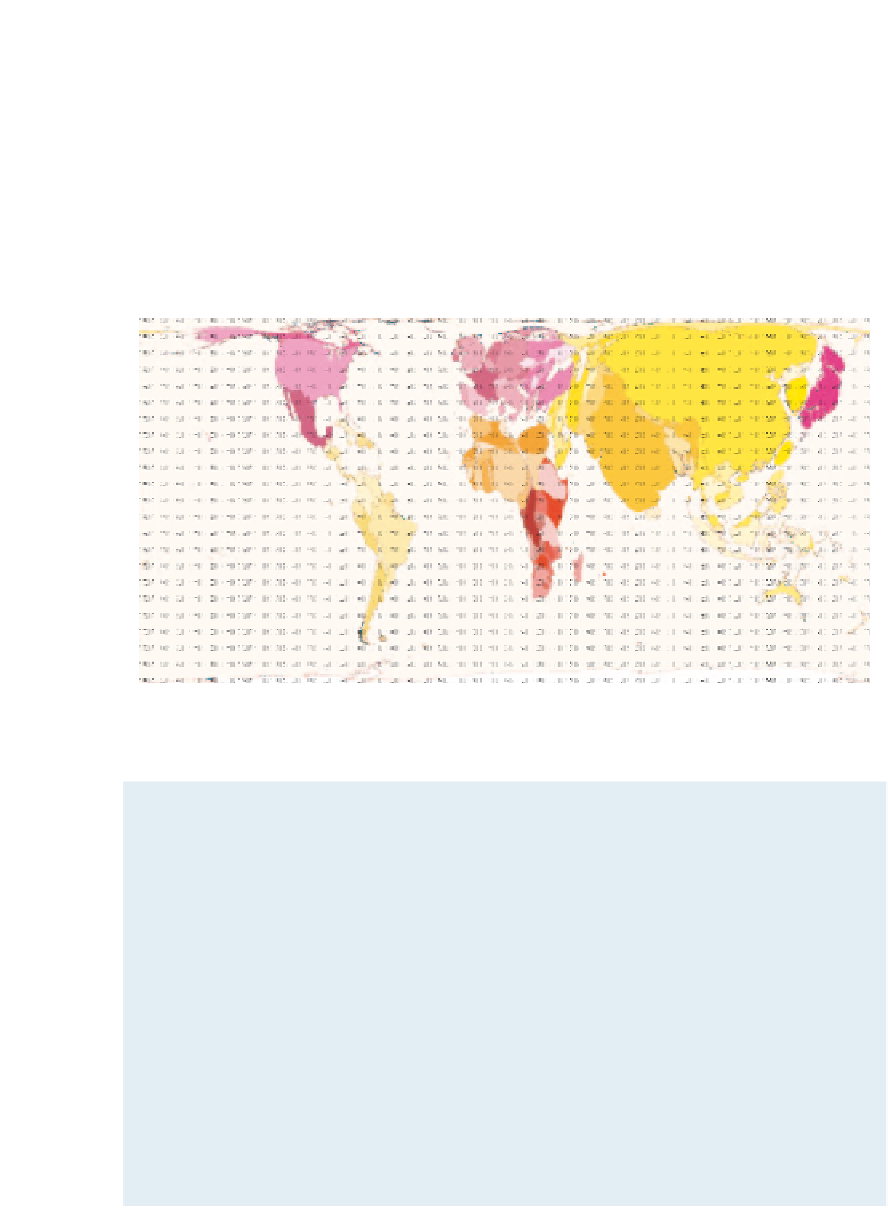Geography Reference
In-Depth Information
women in services are 54 per cent of all workers worldwide. No longer are agriculture and
industry the main employers - what does this suggest about the stage of our current world
civilization? It suggests that we have gone beyond the majority working to produce food
and technology for survival (though of course industrial workers spend little of their time
producing items that are essential for survival in the territory where they are consumed).
Now more than half the global workforce spends their working hours not producing, but
servicing. Services, like industry and agriculture, are not necessarily tied to supplying people
in or near to where they live. The international scope of services is facilitated by the massive
spread of communication technologies (see Figures 5.31 and 5.32), in the same way that
transport links (see Worldmapper Maps 33-40) within and between territories allow for
trade in raw agricultural materials and manufactured products.
Figure 5.17
Territory size shows the proportion of worldwide male services workers living there
(Worldmapper Map 132)
Text Box 5.16: Services Men
Service work does not produce a material object. Services include tasks such as call
centre work, hospitality, armed forces and transportation. More men than women
work in services.
The most services men work in China; then India; then the United States. Some
14% of the world's population are men that work in the service sector. The lowest
percentage of men working in services is 5.5%, in Haiti. Services workers live in every
territory in the world, as many services must be performed
in situ
. Some services, such
as call centres and data entry, could occur anywhere, so long as there are good channels
of communication.
These guys know accountancy, have computer skills, speak English and they are
ready and willing - and that combination is a killer
(Kiran Karnik, 2003)











Search WWH ::

Custom Search